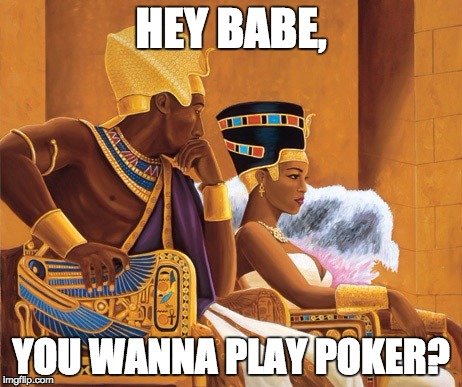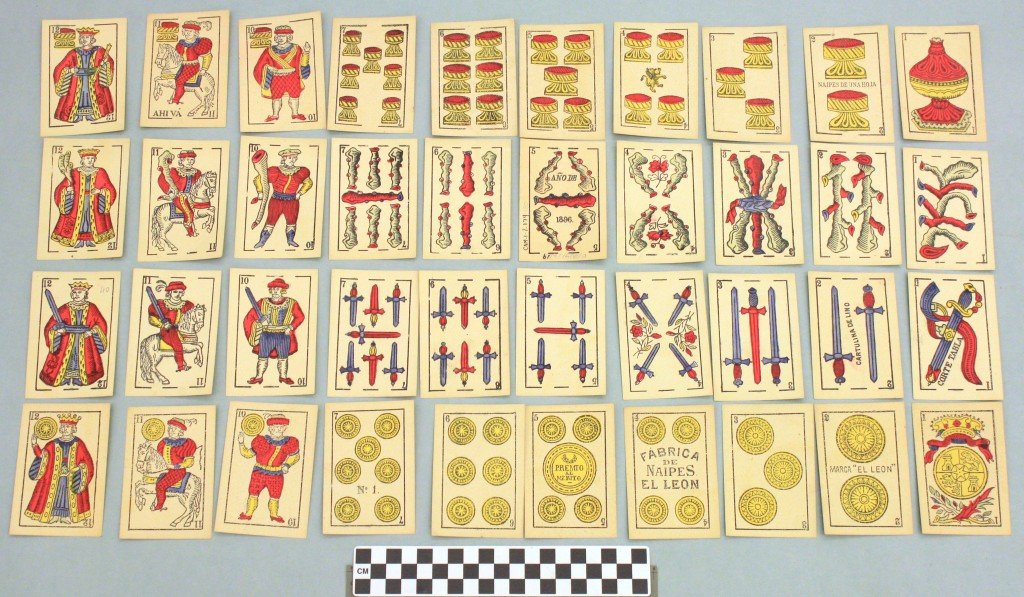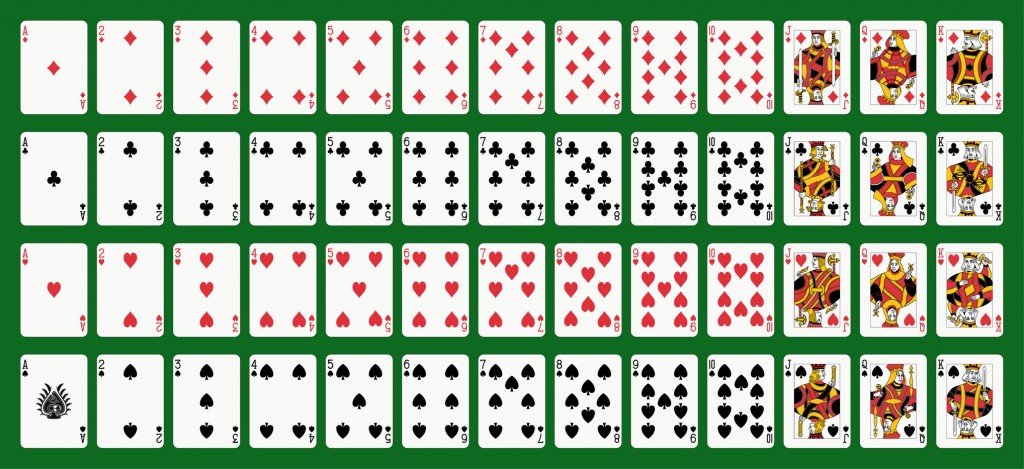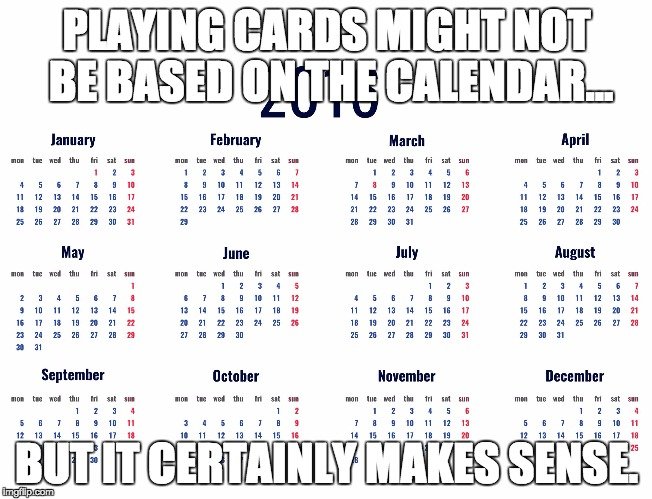Table of Contents (click to expand)
52 cards deck basically consist of 4 suits: hearts, diamonds, spades and clubs. Each suit further contains 13 cards: 10 ace cards (A to 10) and 3 picture cards: Jack, Queen, and King. Two suits (hearts and diamonds) in red color and another two (spades and clubs) in black.
When you stroll to the poker table at a fancy Las Vegas casino, you probably think of a hundred different things – the flashing lights, the slot machines, the beautiful people in the crowd, potential celebrities all around.
But when the dealer deals you in, a strange thought comes to you… why clubs and spades? Why hearts and diamonds? Why two colors? Four suits? 52 cards?
By the time your brain wraps its head around all the questions you find on those five playing cards in your hand, the whole table is waiting for you to bet or call.
It may have been bad timing, but these are some good questions, but to answer them we need to step back a little in time.
A Brief History Of The Card Game
More than 600 years ago, playing cards were first introduced to the margins of European society, probably from the Middle East, as it was once known as the “Moorish Game.”
However, there is an earlier recorded history of card playing that goes back almost two centuries – to China and the Far East, but most suspect that it is an Arab game. Arab countries have been the capitals of knowledge and human progress for centuries, and many things we take for granted have their origins in what is now known as the Middle East and North Africa.

Trade with Europe picked up in the 14th century, and when Egyptian merchants came to southern Europe, they had a new pack to share – and sell. Playing cards were then hand-made, which made them quite expensive and “elitist” in some circles, but were still extremely popular.
The concept of a simple, portable and endlessly amusing game took hold in Europe, and with the advent of the Gutenberg printing press in 1440, the large-scale production of playing cards made them even more accessible to the common people. Essentially, cards were one of the first real “trends” of popular culture as we know it today.
Although there is no definitive record of what “card games” were played at the time, most scientists assume that the games had similar rules or guidelines to our current games, because even 600 years ago, these card games might seem very familiar to us in the 21st century!
Also Read: How Many Faces Can Dice Have?
The Imagery Of Playing Cards
One of the coolest things about playing cards is their incredible diversity. Over the centuries, there have been tens of thousands of different designs and variations in terms of colors, colors, figure placements, characters, scenes, and even social intentions.
Playing cards were bawdy, socially critical, informative, and even considered “fine art” at different points in their history. In a way, playing cards have always reflected the cultures they came from, which also explains the origin of the suits, as well as the face cards!
How Suits Came To Be
As already mentioned, playing cards were an opportunity to reflect a little on your culture and possibly spread this information or art to other parts of the world.
For example, playing cards were very popular with soldiers because they were easy to carry and allowed universal rules for gambling. When these first Europeans came into contact with playing cards, they also had four suits – Chalice, Sword, Money and Baton.
However, this did not translate very well in Italy, Spain, Germany, England and France (some of the earliest countries to introduce playing cards).

Germanic countries switched the suits to Hearts, Acorns, Bells and Leaves, while France and England went with Hearts, Spades, Diamonds and Clubs – in other words, the suits that most of us are familiar with. These became known as “French playing cards” and include the three face cards (jack/knave, queen/lady, and king).
Although these basic elements are typically the same in modern playing cards, there are thousands of exceptions. Swiss, Italian, German and Spanish card games come in different sizes to allow for different play styles, and over the centuries, hundreds of different suits, face card variations (gender issues meant no queens in the past) and sizes have been made.
It’s all well and good that there are different card sizes, but what is the explanation for the standard 52-card deck?

Also Read: How High Can You Count On Your Fingers?
Why Are There 52 Cards?
There are many theories behind this, none of which could or can be proven correctly, but they are nevertheless interesting: the four colors represent the four seasons, while the 52 maps represent the 52 weeks of a year.
The thirteen cards per suit represent the thirteen lunar cycles. This belief may not be far off, since the Arab world was very good at astronomy and may have set a universal standard that everyone could understand.

That being said, with the broad range of suits, deck sizes, face cards and games all over the world, playing cards will probably continue to evolve and grow.
Although they are no longer the art form, code-bearing Freemasonry propaganda, or social commentary on the ruling classes they once were, playing cards is still a lot of fun, especially if you know a little more about their history!
Do you remember why there are 52 cards in a deck?

